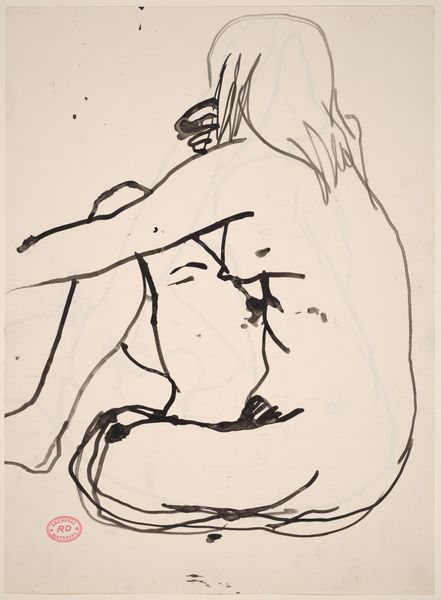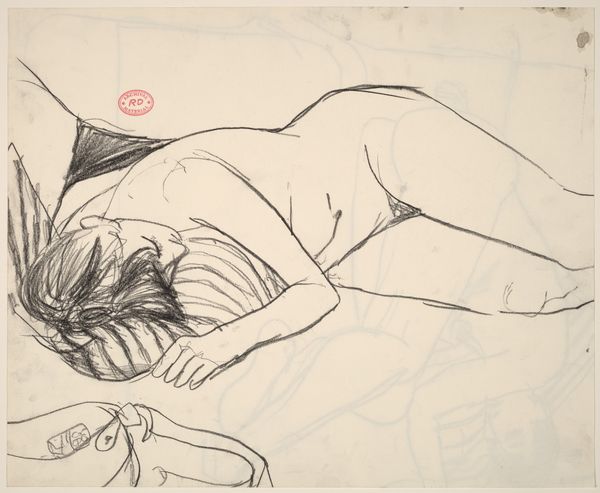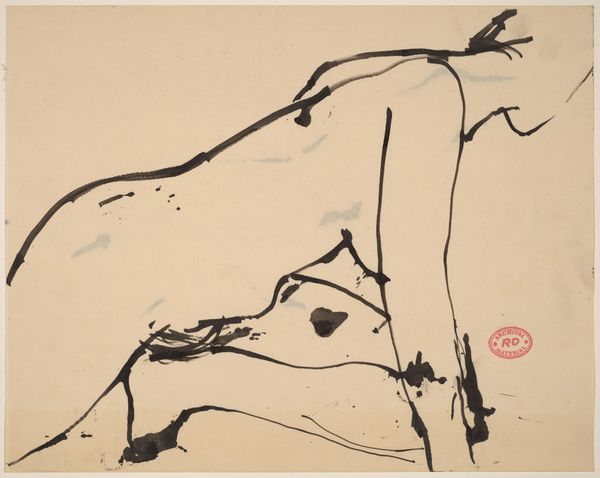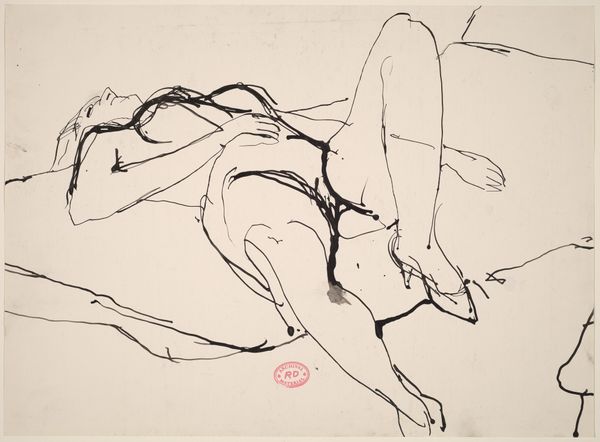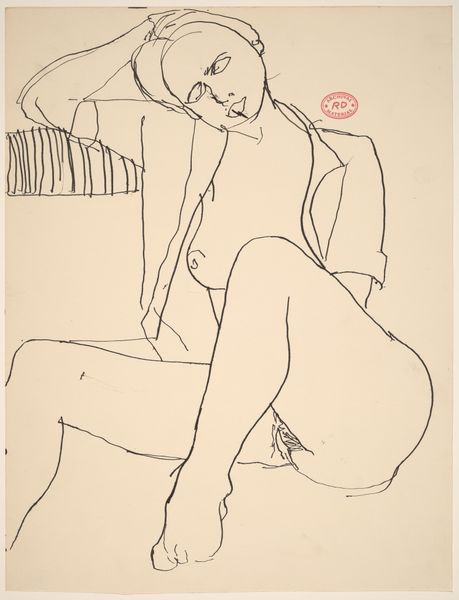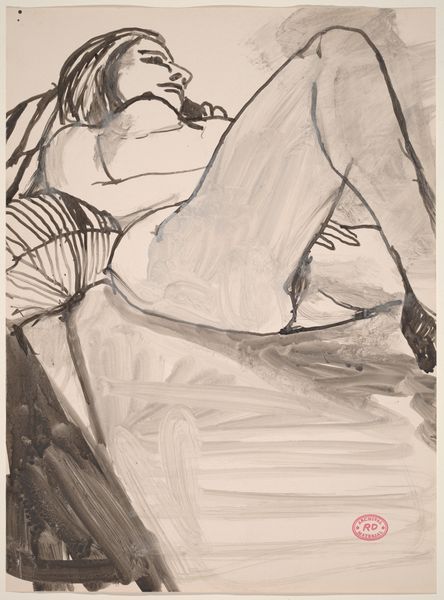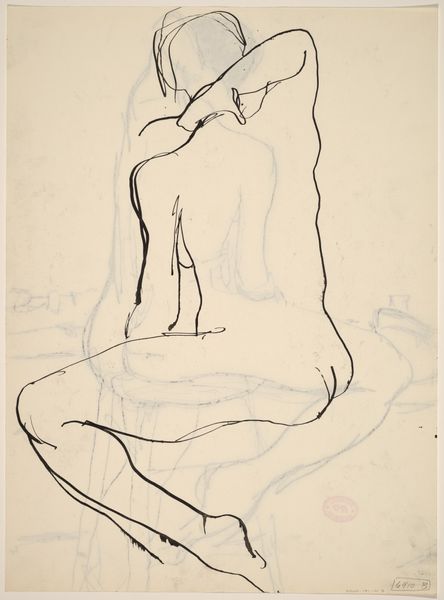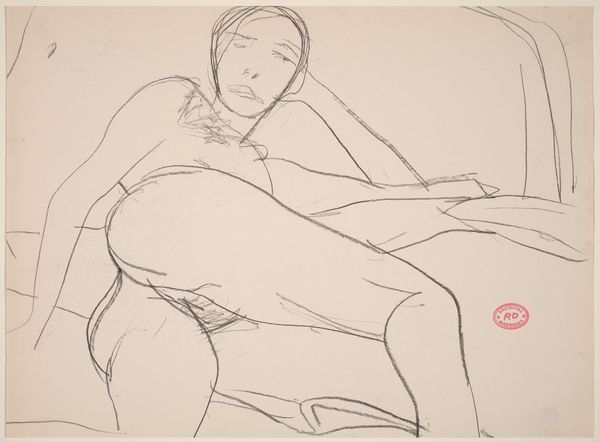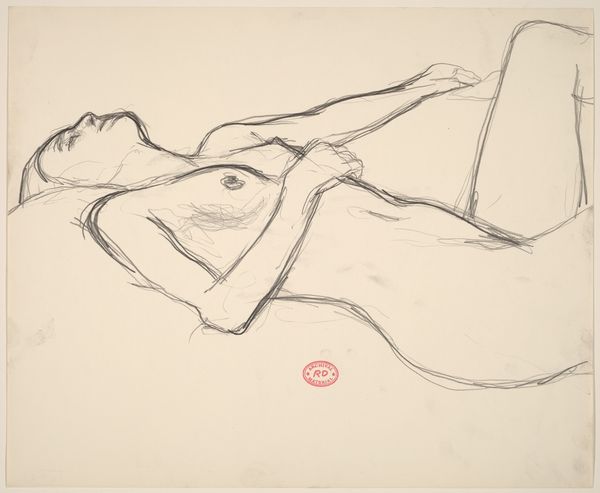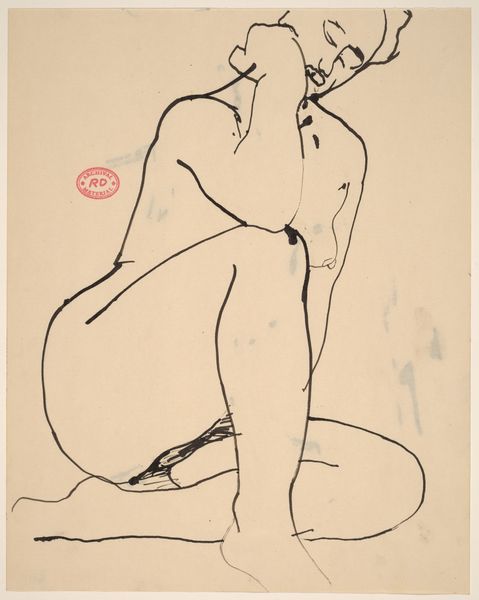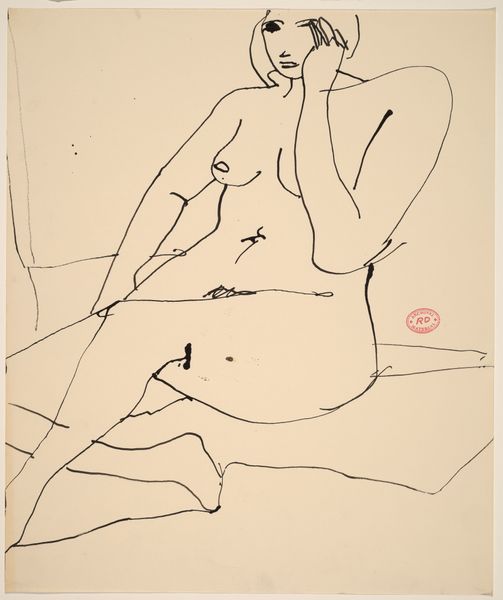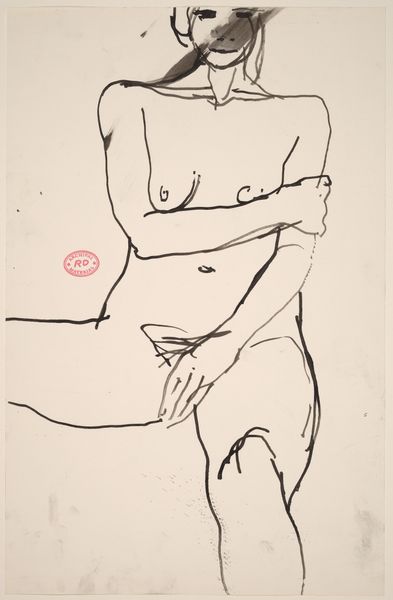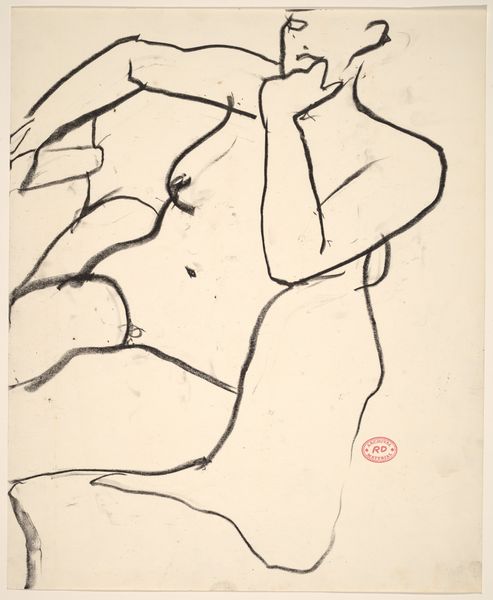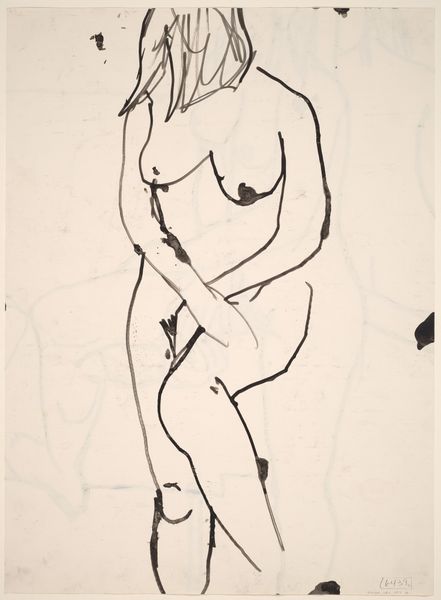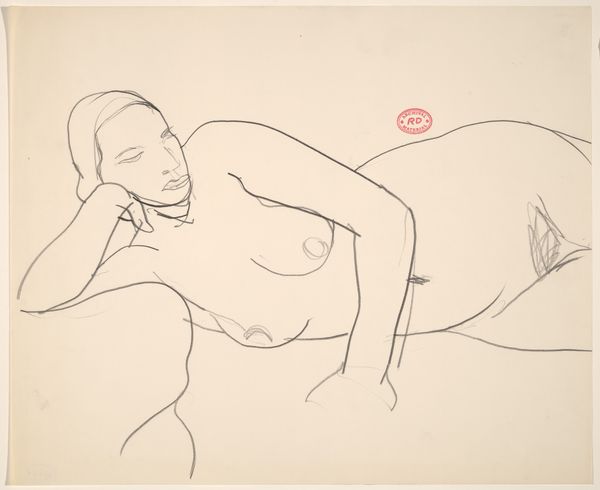
Copyright: Modern Artists: Artvee
Editor: Looking at Patrick Nagel's "Susan" from 1982, created with acrylic paint, I'm struck by the sleekness, almost an artificial stillness, in the subject's pose and expression. There's something very 80s about it! What do you see in this piece, considering its time and cultural context? Curator: Well, this piece, representative of the Neo-Pop movement, operates very consciously within the visual landscape of its era. Nagel was hugely successful, and part of that success relied on how his images played into and were consumed by a specific public. Editor: In what ways? Curator: Consider the rise of advertising and music videos at this time. Nagel's stark lines, flattened perspective, and emphasis on surface glamour are all echoed in those media. Think about how this aesthetic reflects, or perhaps reinforces, particular ideals of femininity circulating in the '80s, particularly through powerful television programs, and in what kinds of galleries this work may have been displayed at that time. The positioning of art within broader societal power structures is a vital key to reading any work. Editor: That's fascinating. So, you're saying the image isn’t just about the woman; it reflects a broader set of cultural aspirations and the commercial forces shaping art itself. I hadn't considered that so directly before! Curator: Precisely. Understanding this interaction reveals much about the socio-political currents influencing both art production and reception at the time. Art never exists in a vacuum. Editor: I definitely have a much wider picture to reflect upon now, considering both the immediate and external elements contributing to its meaning. Thanks for that fresh viewpoint! Curator: It’s always enriching to reassess art, understanding how historical context shapes its present and future interpretations.
Comments
No comments
Be the first to comment and join the conversation on the ultimate creative platform.
